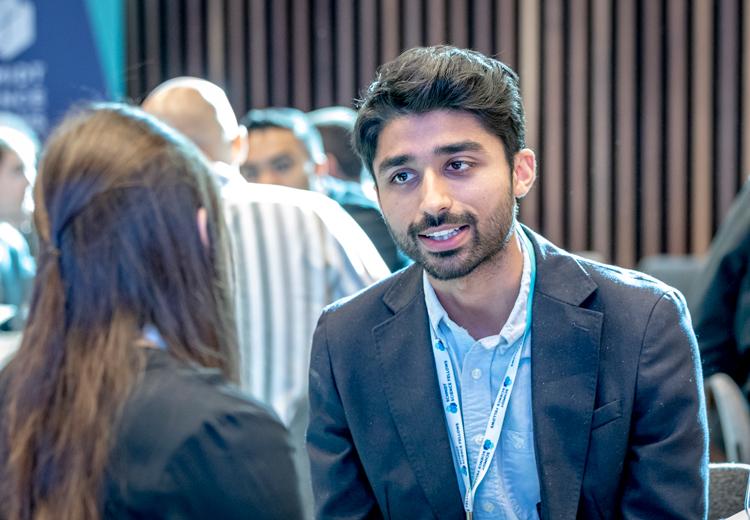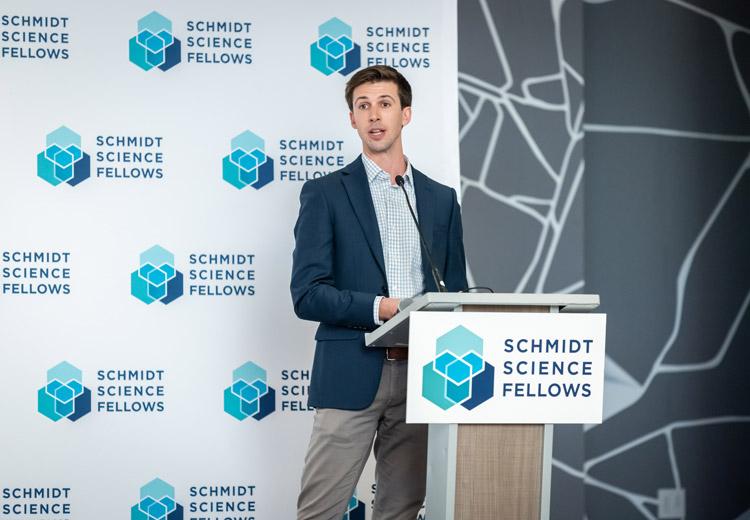
Understanding complex systems with computational power and interdisciplinary science
Interdisciplinarity
Sponsored by

Advice for bringing together multiple academic disciplines into one project or approach, examples of interdisciplinary collaboration done well and how to put interdisciplinarity into practice in research, teaching, leadership and impact

You may also like
Popular resources
Society’s digital transformation is still in its infancy and yet we already have an ocean of data to draw upon. But if all this information is to provide us with the raw material for innovation, we need scientists who can interpret it. Sahil Loomba is one such scientist. A Schmidt Science Fellow in the Institute for Data, Systems and Society at Massachusetts Institute of Technology, Loomba specialises in applying mathematics and machine learning to better understand complex networks and systems, from the biological and cognitive to the social.
“Networks are my favourite abstraction, and I try to view physical, biological, social, technological, and ecological systems from that perspective. Without that holistic view, we risk being reductionist and unable to plug significant gaps in our knowledge of these complex systems,” Loomba says.
“We are swimming in a lot of data, but to really make sense of that we need to understand the underlying network structure, the mechanisms that are generating that data, to determine what is happening causally,” he says. “For me, it is not just a helpful lens to view the world from, and intellectually stimulating, but it is also a matter of actively solving practical problems.”
Loomba was a computer science and engineering undergraduate when he realised his intellectual curiosity would take him across disciplinary boundaries. He could see how mathematical and computational approaches might help solve problems in biological systems. Loomba’s predoctoral work at Harvard University’s Wyss Institute for Biologically Inspired Engineering gave him first-hand experience of an interdisciplinary research environment.
“It exemplifies the idea of interdisciplinary science and engineering because, under one roof, it had engineers, biologists, computer scientists, mathematicians and doctors working together to respond to extremely complicated challenges in biology and medicine,” he says. “The kinds of outputs that we had were amazing; taking a networked view of genetic perturbations allowed us to successfully repurpose drugs for rare genetic conditions that have now entered clinical trials. It really drove it home for me that interdisciplinary science is what motivates me. It helps us solve real problems in an integrative manner that traditional disciplinary silos often don’t.”
For his doctoral work at Imperial College London, Loomba pivoted to studying misinformation, vaccination behaviours and social segregation in friendship networks, responding to several societal challenges faced during the Covid-19 pandemic. He became a Schmidt Science Fellow in 2023, and the fellowship has allowed him to negotiate many of the obstacles that interdisciplinary scientists face, not least the pressure to publish. It has allowed him to engage in more academic partnerships and to take on more ambitious projects, with the fellowship removing some of the risks that come with cross-disciplinary work.
“I think one of the most wonderful things about the fellowship is that it is a fellowship; we are in a community of people who care for the same things at the end of the day, which is interdisciplinary science,” Loomba says. “We felt seen and heard in terms of the way we like to approach scientific research. That is a big component. It puts me at a kind of psychological ease as a somewhat iconoclastic researcher who is not going to stick to the norm.”
This scientific iconoclasm underpins Loomba’s sweeping research philosophy, which places computation at the heart of understanding the intricate networks that organise our world, from those on a biomolecular level to the systems governing society. “It would be good to see expanded support for researchers pursuing interdisciplinary sciences at all career stages, recognising the important role this approach can play in addressing the challenges we face,” Loomba concludes.
Times Higher Education has partnered with Schmidt Science Fellows to develop a new ranking measuring universities’ contribution to interdisciplinary science. Find out how to participate.
Find out more about Schmidt Science Fellows.
Interdisciplinarity
Sponsored by
